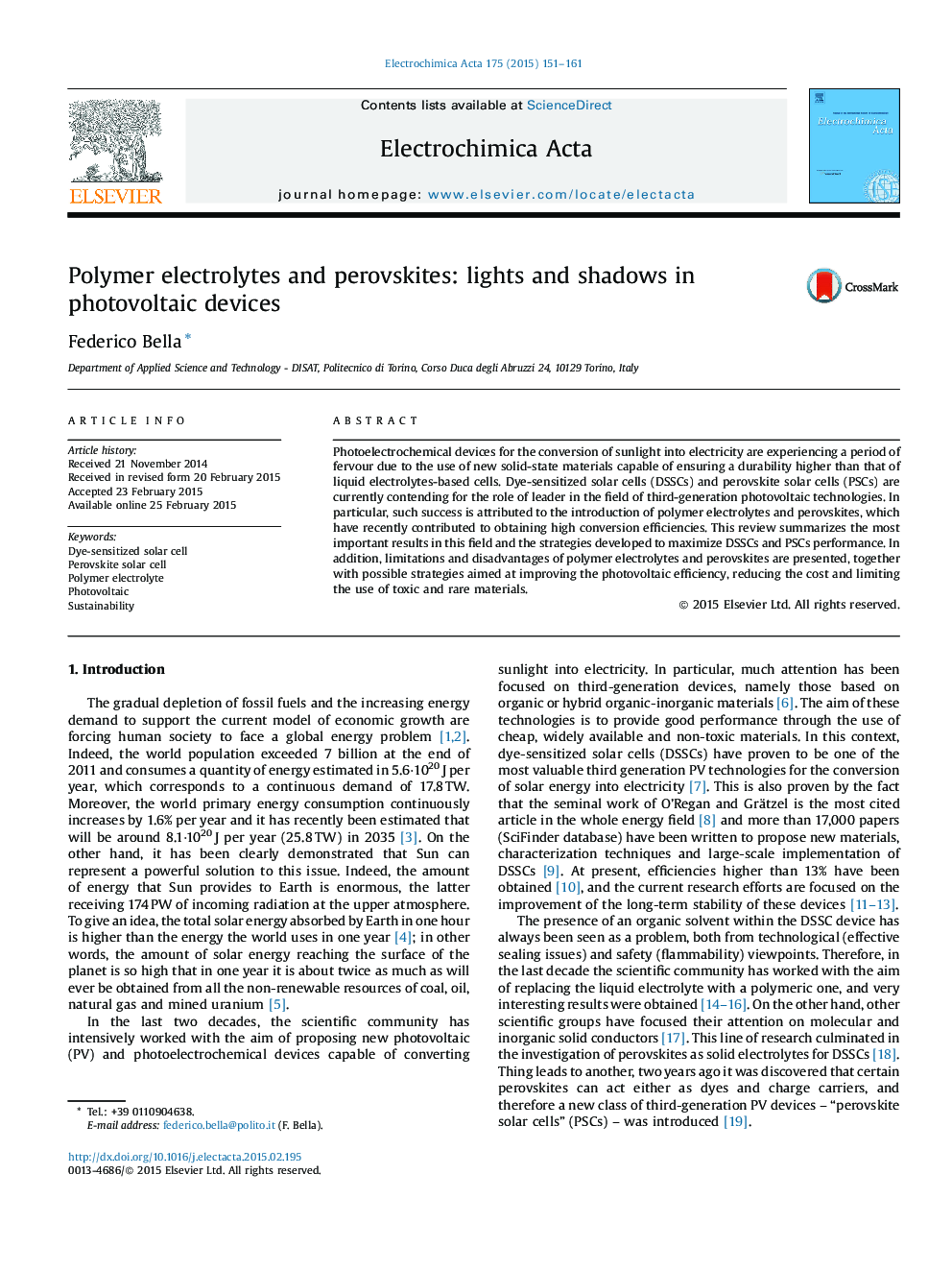| Article ID | Journal | Published Year | Pages | File Type |
|---|---|---|---|---|
| 183635 | Electrochimica Acta | 2015 | 11 Pages |
•Dye-sensitized solar cells (DSSCs) and perovskite solar cells (PSCs) are compared.•Electrolyte volatility can be avoided through the introduction of solid conductors.•Polymer electrolytes and perovskites avoid the use of volatile electrolytes.•Their limitations and disadvantages are also presented.•A strategy for the co-existence of DSSCs and PSCs is expected.
ABSTRACTPhotoelectrochemical devices for the conversion of sunlight into electricity are experiencing a period of fervour due to the use of new solid-state materials capable of ensuring a durability higher than that of liquid electrolytes-based cells. Dye-sensitized solar cells (DSSCs) and perovskite solar cells (PSCs) are currently contending for the role of leader in the field of third-generation photovoltaic technologies. In particular, such success is attributed to the introduction of polymer electrolytes and perovskites, which have recently contributed to obtaining high conversion efficiencies. This review summarizes the most important results in this field and the strategies developed to maximize DSSCs and PSCs performance. In addition, limitations and disadvantages of polymer electrolytes and perovskites are presented, together with possible strategies aimed at improving the photovoltaic efficiency, reducing the cost and limiting the use of toxic and rare materials.
Graphical abstractFigure optionsDownload full-size imageDownload as PowerPoint slide
